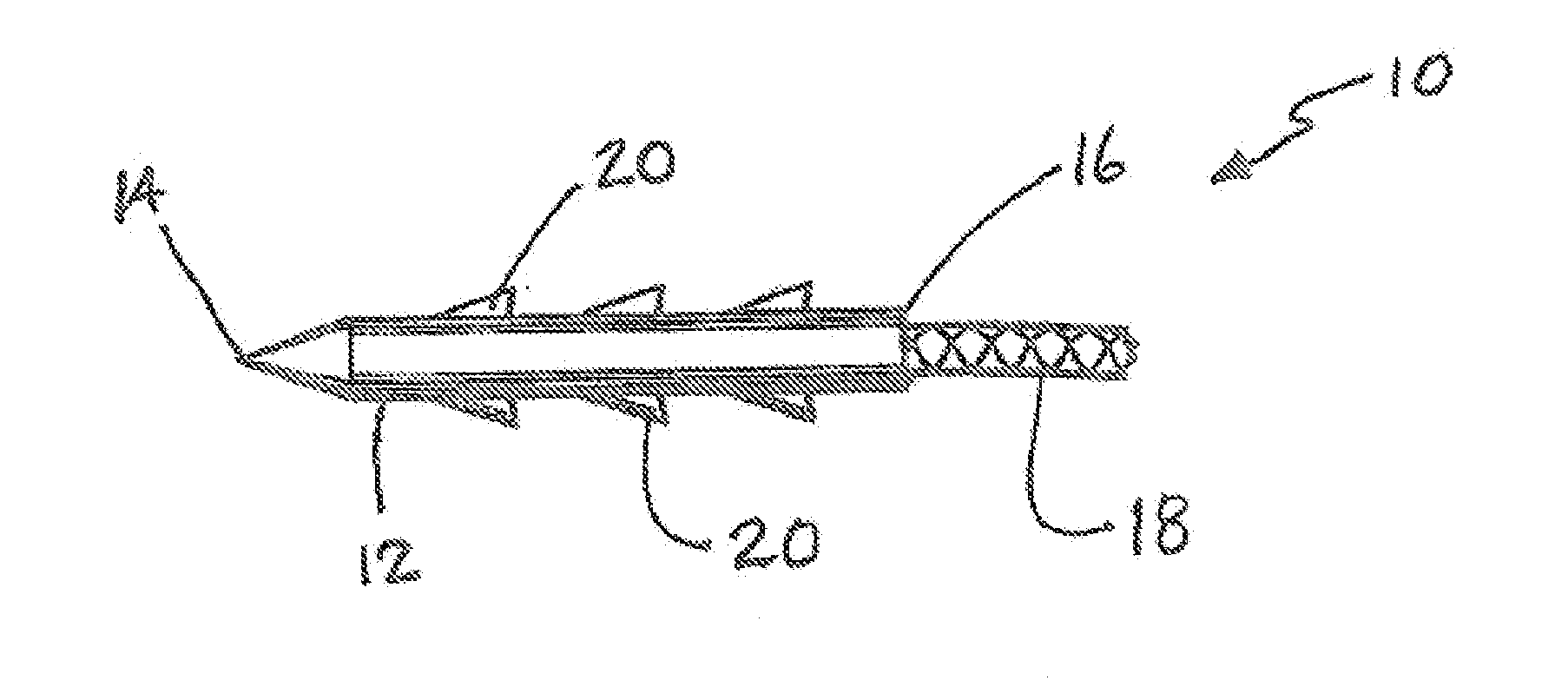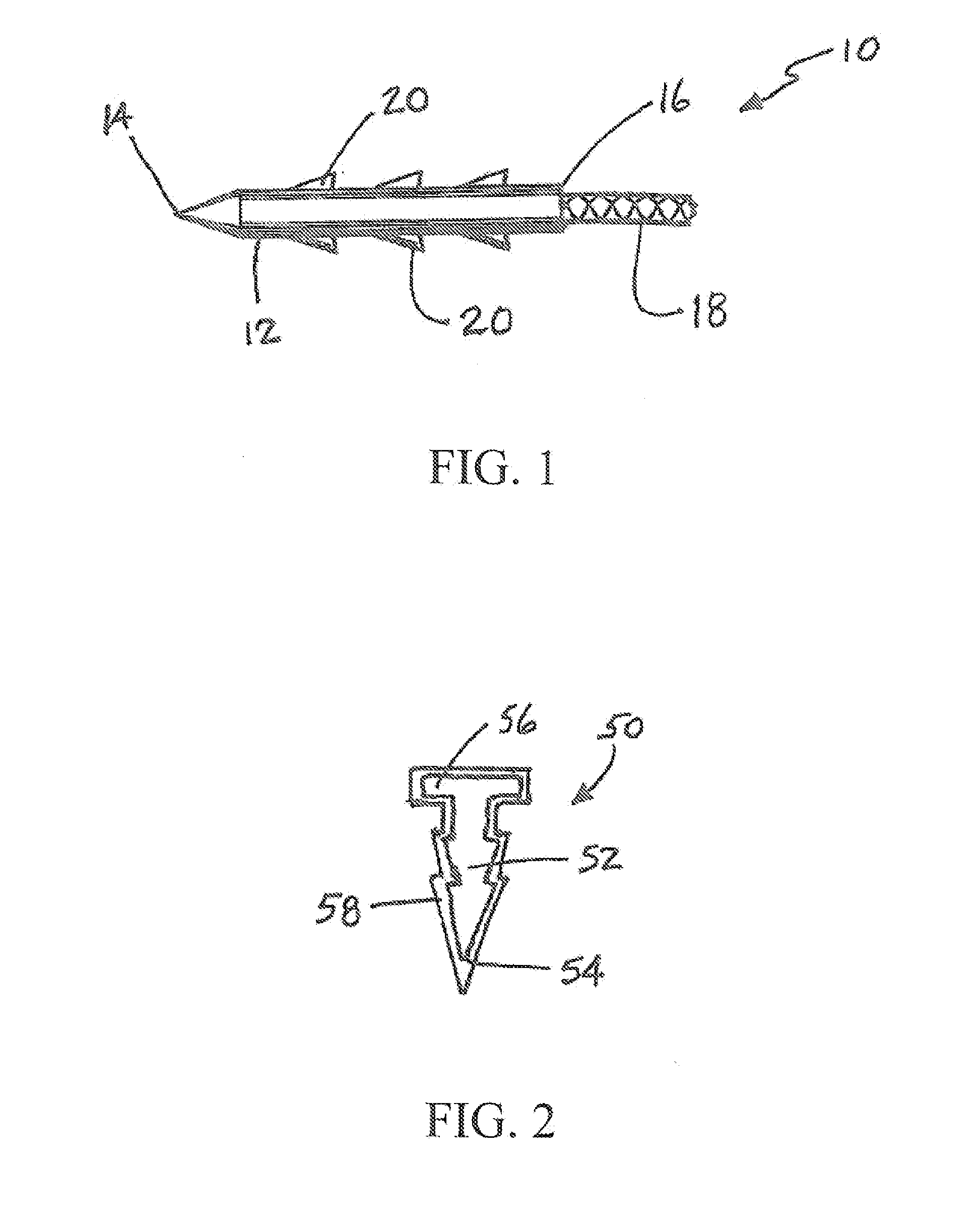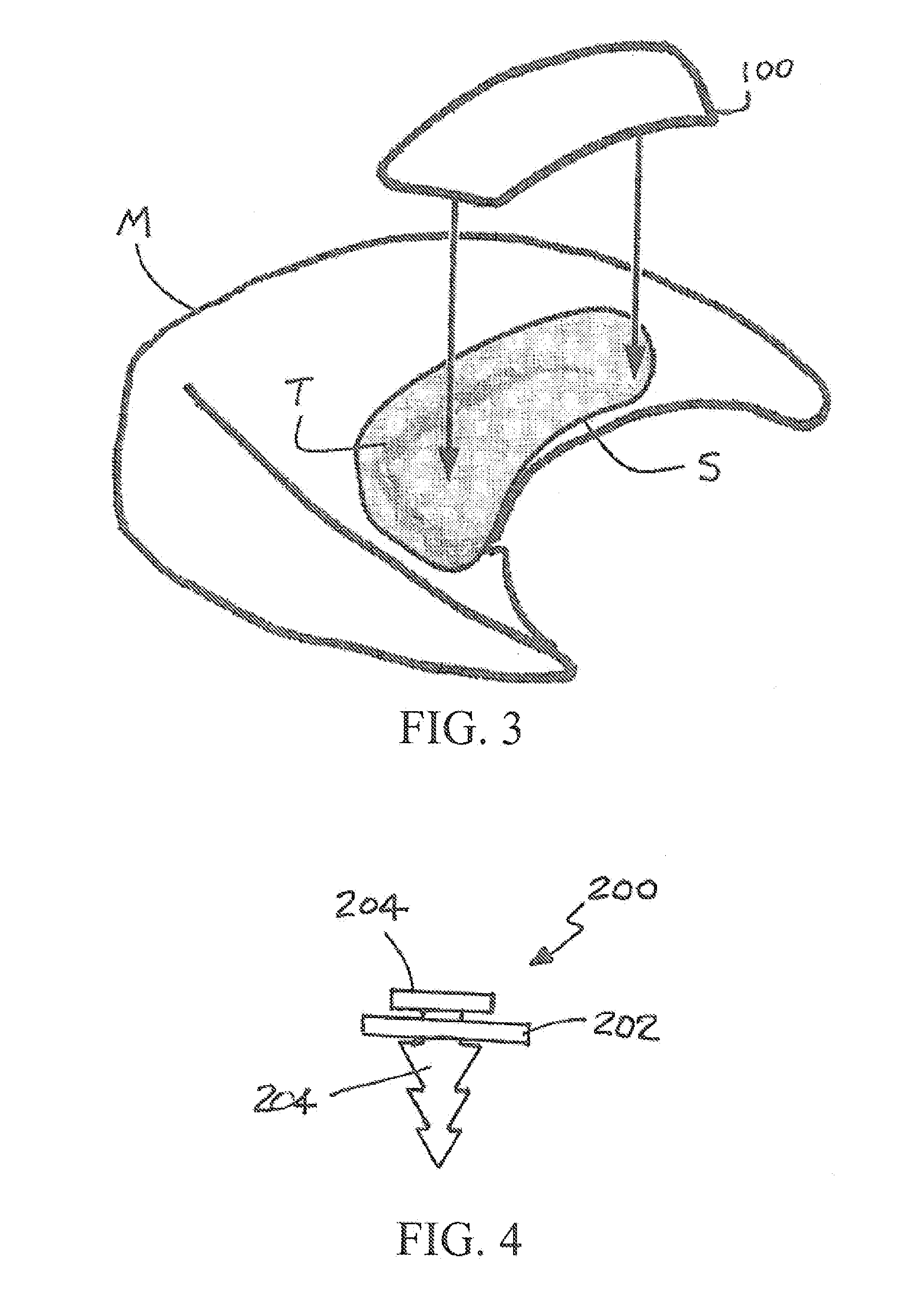Crosslinker enhanced repair of connective tissues
a crosslinker and connective tissue technology, applied in the field of protein crosslinking reagents, can solve the problems of reducing the operating time and risk of complications of patients, affecting the surgical outcome of 850,000 patients, and not being as strong as sutures
- Summary
- Abstract
- Description
- Claims
- Application Information
AI Technical Summary
Benefits of technology
Problems solved by technology
Method used
Image
Examples
example 1
[0047]A patch constructed of a biodegradable polymer, such as poly(lactic acid) (PLA), poly(glycolic acid) (PGA) or poly(lactic-co-glycolic acid) (PLGA) is dip-coated with an aqueous solution containing 10% polyvinyl alcohol (PVA) and 100 mM of the crosslinker methylglyoxal (MG) and then allowed to dry at room temperature. The thickness of the MG-impregnated coating can be varied utilizing multiple applications of solution, by varying the concentration (and thus viscosity) of the PVA polymer, or adjusting the rate at which the patch is withdrawn from the PVA-MG solution. The release rate of the MG can be varied by changing the concentration of the PVA polymer and / or that of the MG.
example 2
[0048]A patch constructed of a biodegradable polymer, such as PLA, PGA or PLGA, is sprayed with a solution of partially hydrolyzed PVA in ethanol containing 200 mM of the crosslinker genipin (GP) and allowed to dry. The thickness of the GP-impregnated coating can be varied utilizing multiple applications of solution. The release rate or loading of the GP can be varied by varying the concentration PVA and / or GP in the coating solution. These patches can be used for treatment of meniscal repair as shown in FIG. 3.
example 3
[0049]A biodegradable meniscal fixation device, such as a tack or dart, is dip-coated with a solution of 15% association polymer composed of cellulose acetate phthalate (CAP) and Pluronic (P)(CAPP) in acetone containing 400 mM GP and allowed to dry. The total crosslinker loading can be controlled by either varying the concentration of the crosslinker in the coating solution or by the application of numerous sequential coatings. The release rate of the crosslinker can also be changed by varying the ratio of CAP:Pluronic or by varying the concentration of CAPP, plasticizer, and / or GP in the coating solution.
PUM
| Property | Measurement | Unit |
|---|---|---|
| Time | aaaaa | aaaaa |
| Time | aaaaa | aaaaa |
| Time | aaaaa | aaaaa |
Abstract
Description
Claims
Application Information
 Login to View More
Login to View More - R&D
- Intellectual Property
- Life Sciences
- Materials
- Tech Scout
- Unparalleled Data Quality
- Higher Quality Content
- 60% Fewer Hallucinations
Browse by: Latest US Patents, China's latest patents, Technical Efficacy Thesaurus, Application Domain, Technology Topic, Popular Technical Reports.
© 2025 PatSnap. All rights reserved.Legal|Privacy policy|Modern Slavery Act Transparency Statement|Sitemap|About US| Contact US: help@patsnap.com



